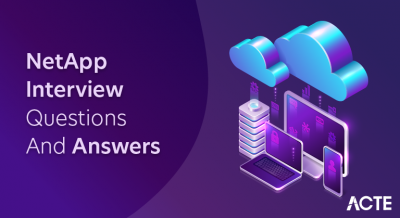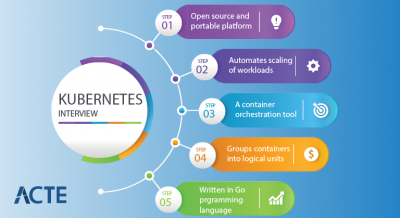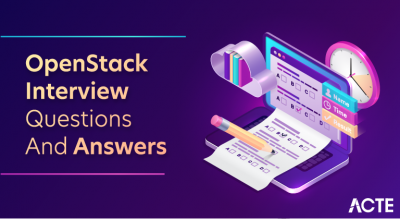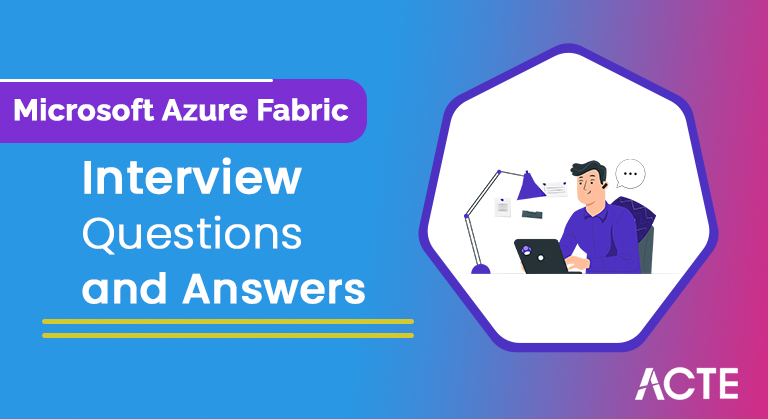
Microsoft Azure Service Fabric is a distributed systems platform for developing, deploying, and managing scalable and dependable microservices-based applications. It is a platform for developing cloud-native applications with stateful and stateless services, dependable collections, intelligent scaling, and health monitoring capabilities. Azure Service Fabric allows developers to focus on defining business logic while abstracting the difficulties of distributed system management. It supports a variety of programming paradigms, including Reliable Services, Reliable Actors, and guest executables, and connects easily with other Azure services to provide additional functionality.
1. Explain what Azure Service Fabric is.
Ans:
Scalable and dependable microservices and containers may be packaged, deployed, and managed with ease using Azure Service Fabric, a distributed systems platform. It is possible to think of Azure Service Fabric as a distributed system stage that makes it easier to deploy, package, and manage dependable and scalable microservices. It also addresses significant issues with cloud application development.
2. Define a node in Azure Fabric Service.
Ans:
An addressable unit in a cluster is called a node. Its placement features and unique IDs are its own. Several nodes can come together to form the cluster. A node is a computer or virtual machine that is a part of a cluster. A number of virtual machines can be deployed and managed collectively using virtual machine scale sets, an Azure compute resource. Each type of node defined in an Azure cluster is configured as a distinct scale set.
3. Explain the role of Azure Service Fabric application instances.
Ans:
- Despite being on the same Fabric Service node, an application instance in Azure Service Fabric can operate independently of other processes. In a cluster, an individual can have an infinite number of instances of any kind of application.
- Every instance of an application will own a unique name inside a cluster and be maintained and versioned separately from the remaining application instances.
4. How can a cluster’s minimum size be determined?
Ans:
Azure supports the cluster’s three nodes for dev/test environments. The reason for this minimal node requirement is that Azure manages a number of Stateful Services. Consistency is intimately related to these services. The capacity of any service to secure a quorum in order to provide an update on their current status is strongly related to this great consistency. The majority of clones for a certain service constitute a quorum.
5. Define fabric cluster.
Ans:
The service Fabric Cluster is a shared pool of machines. These clusters are capable of housing thousands of devices and growing worldwide. Microservices are deployed and managed as a cluster of physical or virtual servers connected by a network called a Service Fabric. A cluster node is a computer or virtual machine that is a component of a cluster. Up to thousands of nodes can be included in a cluster.
6. List the kinds of MicroServices.
Ans:
Stateless Microservices: these don’t maintain a variable state between requests and the services’ responses to them. Worker jobs in Azure Cloud Services, for instance, web proxies, and so forth.
Stateful Microservices: After a request is made and the service responds, it maintains an inconsistent state. For instance, lines, shopping carts, etc.
7. Define a cluster.
Ans:
A group of virtual or physical computers connected by a network is called a cluster. Application instances are being deployed solely on these machines. One driver node and zero or more worker nodes make up a cluster. However, the driver node utilizes the same instance type as the worker node by default.
8. How do the Service Fabric nodes act when an OS update comes out?
Ans:
- Nodes in Azure Service Fabric are not currently automatically updated with OS versions.
- Azure does not allow for automated OS updates on Service Fabric nodes.
- Five nodes are the minimum supported size for a Service Fabric cluster that is operating production workloads.
9. Define the type of application in Azure Service Fabric.
Ans:
Azure Service Fabric supports various application types, including stateless services, which handle stateless workloads like web APIs; stateful services, ideal for managing data consistency in databases or queues; actor-based applications, utilizing lightweight units of computation for scenarios like IoT device management; containers, offering flexibility and portability for microservices-based architectures; and guest executables, enabling seamless migration of legacy applications into a modern cloud-native environment.
10. What is a Box/container?
Ans:
The container is a separate part that uses the virtual actor programming approach to create both stateful and stateless objects that are appropriate for applications with several independent units of computation and state. These are employed in the conveyance of autos, special items, and liquid materials. The freight container is constructed for a certain kind of good and is composed of sturdy materials.
11. Explain what is vertical scaling.
Ans:
“Scaling up” or “vertical scaling” refers to the act of boosting an existing system’s capacity, like its CPU or RAM, in order to satisfy growing needs. Vertical scaling is easier because the logic does not need to be changed. Rather, you are only running the identical code on computers with more capability. Vertical scaling is the process of giving a machine extra power, such as more CPU or RAM.
12. Compare the deployment model of Azure Service Fabric with Azure App Service.
Ans:
| Aspect | Azure Service Fabric | Azure App Service | |
| Deployment Model |
Microservices |
Monolithic/Single-Container | |
| Scaling | Granular scaling | Horizontal scaling | |
| State Management |
Supports stateful services |
Stateless | |
| Service Orchestration | Built-in orchestration capabilities | Basic deployment orchestration |
13. Define programming models that Azure Service Fabric offers.
Ans:
Azure Service Fabric offers two programming methods for creating apps:
Reliable Services: An API for creating stateless and stateful services that save state in.NET collections like queues and dictionaries while utilizing the StatelessService and StatefulService.NET classes.
Dependable Players: An API for Using the virtual actor programming approach to create both stateful and stateless objects that are appropriate for applications with several independent units of computation and state.
14. Which apps is Azure Service Fabric compatible with?
Ans:
- Skype for Business
- Intune
- Azure Event Hubs
- Azure Data Factory
- Azure Cosmos DB
- Azure SQL Database
15. Define Azure Service Fabric and specify the type of service.
Ans:
Azure Service Fabric is a distributed systems platform designed to simplify developing, deploying, and managing scalable and resilient microservices-based applications. It offers a solid foundation for creating cloud-native apps that meet scalability, dependability, and high availability criteria. Microsoft Azure’s Platform as a Service (PaaS) offering, Service Fabric, simplifies distributed systems so developers can focus on writing code rather than managing infrastructure.
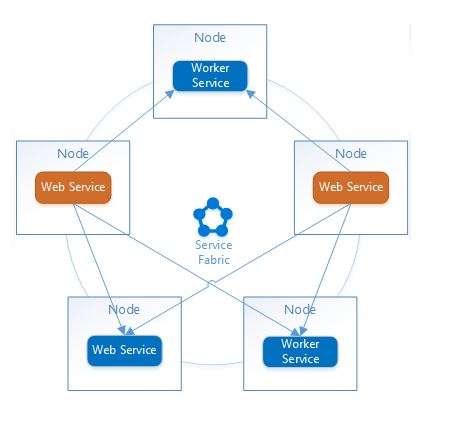
16. Describe MicroService.
Ans:
MicroService applications are composed of customer-focused, scalable, stand-alone, and small services that communicate with one another using well-defined interfaces and standard protocols. Application teams and developers can manage production hardware, software, servers, databases, and other resources. Modern software is designed, developed, and deployed using the microservices paradigm.
17. What advantage does service fabric offer?
Ans:
Service Fabric offers a powerful, lightweight runtime for both stateless and stateful microservices. Service Fabric’s strong support for creating stateful services either through containerized stateful services or programming models integrated into the framework. With hundreds or thousands of apps or containers per machine, Service Fabric can quickly deploy applications at a high density.
18. Explain what is meant by horizontal scaling.
Ans:
Horizontal scaling, also known as scale-out scaling, refers to increasing a system’s capacity by adding more instances or nodes in a distributed manner. Instead of upgrading individual components vertically by adding more resources to existing nodes, horizontal scaling involves distributing the workload across multiple nodes or instances. This approach improves performance, reliability, and scalability by leveraging the collective resources of multiple instances to handle increased demand.
19. Which measures have an impact on Service Fabric-supported resource governance?
Ans:
Resource Allocation Policies: Service Fabric enables administrators to define resource allocation policies to manage and allocate resources effectively across services and clusters.
Capacity Planning: Capacity planning involves estimating the required resources and capacity to effectively support current and future workloads.
20. Define an application package in Azure Service Fabric.
Ans:
An application package in Azure Service Fabric is a self-contained unit that encapsulates all the necessary components and dependencies of a service or application. It includes the application code, configuration files, dependencies, and metadata required for deployment and execution within the Service Fabric cluster. By bundling these elements into a single package, developers can ensure consistency and portability across different environments, simplifying the deployment and management process.
21. Define a service instance azure service fabric.
Ans:
In Azure Service Fabric, a service instance is a running unit of a service deployed within the cluster, responsible for executing the service’s code and handling incoming requests. Each instance can be stateful or stateless, distributed across multiple nodes for scalability and resilience. Managed by the Service Fabric runtime, service instances communicate using reliable messaging protocols and are identified by unique instance IDs. They play a crucial role in executing the logic and functionality of services within the distributed environment.
22. What distinguishes AKS from Azure Fabric Service?
Ans:
Azure Kubernetes Service (AKS) is primarily concerned with managing Kubernetes-based container orchestration, providing a streamlined platform for building and scaling containerized applications using Kubernetes’ declarative infrastructure approach. In comparison, Azure Service Fabric provides a broader set of functionality for designing and maintaining distributed applications, including support for various types of applications such as actors, guest executables, and stateful services.
23. What does Azure Fabric Service’s cluster mean?
Ans:
An Amenity A fabric cluster is a group of connected physical or virtual machines where your microservices are installed and operated. A cluster node is a computer or virtual machine that is a component of a cluster. Nodes in a cluster might grow up to thousands. Microservices are deployed and managed within a cluster of real or virtual servers connected to a network called a Service Fabric.
24. Define Fabric clouds.
Ans:
The term is typically used to describe a consolidated high-performance computing system made up of networking, storage, and parallel processing functions that are loosely coupled and connected by high bandwidth interconnects (like 10 Gigabit Ethernet and InfiniBand). Still, it has also been used to refer to platforms like Azure.
25. Which cloud deployment models are there?
Ans:
The three cloud deployment models are as follows:
Public Cloud: The cloud provider owns the infrastructure, and the server you’re utilizing can have multiple tenants framework.
Private Cloud: Putting your website on your servers or putting it on a dedicated server provided by the cloud provider.
Hybrid Cloud: This type of cloud computing refers to the combination of Public and Private cloud services. As an illustration, consider storing sensitive data on your internal servers and hosting your company’s public website on the public Cloud.
26. What distinguishes service Fabric from microservices?
Ans:
Service Fabric is a distributed systems platform that supports various application types, including microservices. While microservices architecture decomposes applications into small, independently deployable services, Service Fabric offers additional capabilities such as stateful services, actors, and guest executables, providing a broader range of options for building and managing distributed applications beyond microservices alone.
27. What is Azure Service Fabric used for?
Ans:
Azure Service Fabric is used for building, deploying, and managing scalable and reliable distributed applications. It provides features such as state management, automatic scaling, and service lifecycle management, making it suitable for various applications, including microservices-based architectures, IoT solutions, e-commerce platforms, and more.
28. How are Azure and Fabric different from one another?
Ans:
Azure refers to Microsoft’s cloud computing platform, offering various computing, storage, networking, and other services. On the other hand, Azure Service Fabric is a specific service within the Azure platform focused on providing a distributed systems platform for building and managing applications. While Azure provides a wide range of cloud services, Service Fabric caters to distributed application development and deployment needs.
30. What does Azure Fabric Controller entail?
Ans:
Azure Fabric Controller is a core component of Azure Service Fabric responsible for managing the lifecycle of applications and services deployed within a Service Fabric cluster. It handles service deployment, scaling, health monitoring, and failover tasks, ensuring that applications remain available, reliable, and scalable. The Fabric Controller abstracts away the complexities of managing distributed systems, allowing developers to focus on application development rather than infrastructure management.
31. What does Azure mean by virtual machine scale sets?
Ans:
Virtual machine scale sets are an Azure compute resource used to launch and administer a group of identical virtual machines. Scale sets are meant to provide complete autoscale when all virtual machines (VMs) are set up identically, so pre-provisioning of VMs is not necessary. Large-scale services that target containerized workloads, big data, and computation are, therefore, simpler to design.
32. Explain any two types of data services.
Ans:
Connected data disk setup that is relevant to each virtual machine in the group. Azure files (SMB shared drives), OS drives, and temp drives (local, not backed by Azure Storage) are additional alternatives for data storage.
- Azure data services (such as Azure blobs and tables)
- External data service (remote database, for instance)
33. Explain Microsoft Azure and the purpose of its usage.
Ans:
Microsoft Azure is a comprehensive cloud computing platform provided by Microsoft, offering a wide range of services for building, deploying, and managing applications and services through a global network of data centers. It provides infrastructure as a service (IaaS), platform as a service (PaaS), and software as a service (SaaS) offerings, enabling organizations to leverage scalable computing resources, storage solutions, networking capabilities, databases, and more.
34. Why do we employ roles, and what are they?
Ans:
In Microsoft Azure, roles are used to define the responsibilities and permissions assigned to users or groups within an Azure subscription. Roles help control access to Azure resources and services, ensuring that users only have the permissions necessary to perform their specific tasks. There are different types of roles in Azure, including built-in roles like Owner, Contributor, Reader, and custom roles that can be tailored to meet specific organizational requirements.
35. Which website is deployed using a service in the Cloud?
Ans:
One example of a website deployed using a service in the cloud is a WordPress website hosted on Azure App Service. Azure App Service is a fully managed platform for building, deploying, and scaling web applications and APIs. With Azure App Service, developers can easily deploy websites built with various technologies like .NET, PHP, Node.js, Python, and Java without managing the underlying infrastructure.
36. Define an Availability Set.
Ans:
An Availability Set in Azure is a logical grouping of virtual machines (VMs) within an Azure data center that helps ensure high availability and resilience of applications. VMs deployed within an Availability Set are distributed across multiple physical servers (racks) and update domains to minimize the impact of hardware failures and planned maintenance events. By distributing VMs across multiple fault and update domains, Azure ensures that applications remain available even in the event of hardware failures or planned maintenance activities.
37. How do Fault Domains work?
Ans:
Fault Domains in Azure are a construct that defines groups of hardware within an Azure data center that share a common power source and network switch. Azure ensures that VM instances within the same Availability Set are distributed across different fault domains to minimize the impact of hardware failures. By distributing VMs across multiple fault domains, Azure enhances the availability and resiliency of applications, ensuring that they remain operational even in the event of hardware failures affecting a specific fault domain.
38. What are the Update Domains?
Ans:
Update Domains in Azure represent groups of VM instances within an Availability Set that can undergo maintenance updates independently. Azure ensures that VM instances within the same Availability Set are distributed across different update domains to minimize downtime during planned maintenance events.
39. What are scale sets compatible with data disks?
Ans:
The operating system, applications, and data of a virtual machine instance are stored on disks in virtual machine scale sets. When establishing and overseeing a scale set, it’s critical to select a disk size and configuration that aligns with the anticipated workload. A set of scales can specify an event. The operating system, applications, and data of a virtual machine instance are stored on disks in virtual machine scale sets.
40. What are groups for Network Security?
Ans:
Groups for Network Security in Azure refer to Network Security Groups (NSGs), which are a set of rules that control inbound and outbound traffic to network interfaces (NICs), VMs, or subnets in Azure. NSGs allow organizations to enforce network security policies, such as allowing or denying specific types of traffic based on source and destination IP addresses, ports, and protocols.
41. Describe a break-fix issue.
Ans:
- The term “break-fix issue” refers to technical issues that require the intervention of a support organization to be restored to functioning order.
- It is an industry term used to describe the effort required to sustain a technology that fails during regular operation.
42. Why is Active Directory on Azure used?
Ans:
- One system for managing identities and access is Azure Active Directory.
- It’s employed to provide employees with access to particular services and products within your network.
- Take Twitter and Salesforce.com, for instance. There is built-in support in Azure AD for apps in its gallery that can be added straight away.
43. What should be done in Azure if a request is not authenticated?
Ans:
Set Action to execute when the request is not authenticated to log in with one of the preset identity providers in order to limit app access to only authenticated users. Set “Allow anonymous requests (no action)” as the Action to take when a request is not authenticated in order to authenticate without restricting access.
44. Describe a VNet.
Ans:
A network or environment that may be utilized to operate virtual machines (VMs) and applications in the cloud is known as an Azure Virtual Network (VNet). The Azure network’s virtual machines and services communicate securely with one another after they are established. A VNet is a cloud replica of your network. It makes sense to separate your cloud-launched instances from the remainder of your resources.
45. What is Redis Cache on Azure?
Ans:
Redis is an open-source, in-memory data structure store with a BSD licence that may be used as a message broker, database, and cache. Based on the widely used Redis cache, which is open-source, is Azure Redis Cache. It provides you with access to a Redis cache that is dedicated, safe, and controlled by Microsoft.
46. How do Redis databases work?
Ans:
- Justification Redis databases are nothing more than a logical division of data contained in a single Redis instance.
- Every database shares cache memory, and each database uses different amounts of memory depending on the keys and values it stores.
47. What distinguishes a Directory Administrator from a Subscription Administrator?
Ans:
Directory Administrator: A Directory Administrator in Azure Active Directory (AAD) is responsible for managing users, groups, applications, and other directory-related resources within an Azure tenant.
Subscription Administrator: A Subscription Administrator in Azure is responsible for managing subscriptions, resources, and billing within an Azure subscription. They have permissions to create, manage, and delete resources, assign roles, and monitor usage and spending within the subscription.
48. What is the Azure Kubernetes service?
Ans:
The Azure Kubernetes Service (AKS) is a managed Kubernetes service provided by Microsoft Azure. It simplifies deploying, organising, and scaling containerized applications using Kubernetes orchestration. AKS abstracts away the complexities of managing Kubernetes infrastructure, such as cluster provisioning, scaling, and upgrades, allowing developers to focus on building and deploying applications.
49. Explain the advantages of containers compared to virtual machines.
Ans:
Resource Efficiency: Containers share the host OS kernel, improving resource utilization.
Faster Startup and Scaling: Containers start quickly and scale rapidly due to their lightweight nature.
Portability: Encapsulating applications and dependencies, containers are highly portable across environments.
Isolation: Containers offer process-level isolation, ensuring security and stability.
50. When building a virtual machine, what are the password requirements?
Ans:
Password requirements generally entail creating a password with sufficient complexity to enhance security. This usually involves incorporating a mix of uppercase and lowercase letters, numbers, and special characters. Additionally, it’s advisable to adhere to a minimum password length, typically 8 to 12 characters. Moreover, avoiding easily guessable patterns or commonly used passwords is essential to strengthen the virtual machine’s security posture.
51. What three types of virtual machines exist?
Ans:
Full Virtualization: Simulates complete hardware environment without guest OS modification.
Para-Virtualization: Requires guest OS modification for efficient communication with hypervisor.
Hardware-assisted Virtualization: Uses CPU features to enhance virtualization performance.
52. How much virtual machine storage can I use?
Ans:
The amount of virtual machine storage that can be utilized depends on several factors. These include the specific limitations set by the cloud service provider or virtualization platform being used. Additionally, the storage capacity accessible may be influenced by the subscription or service plan chosen, as different tiers may offer varying storage quotas. Furthermore, the type of virtual machine disk being utilized, such as standard HDD or SSD, can impact both the maximum storage capacity and performance.
53. What are the advantages of utilizing Containers with Service Fabric?
Ans:
Microservices Orchestration: Aligns with microservices architecture for easy management and scaling.
Hybrid Cloud Deployment: Supports deployments across on-premises and cloud environments.
Stateful Services Support: Enables encapsulation of stateful services for resilience.
54. What is the reason behind the client’s cache detached?
Ans:
The client’s cache may become detached for various causes, including network disruptions, changes in data source structure, cached data expiry, or mistakes in cache management logic. Detachment can occur when cached data becomes obsolete or inaccurate, resulting in discrepancies between the client’s cache and the actual data source.
55. Explain Azure Search.
Ans:
Azure Search is a fully managed search-as-a-service solution provided by Microsoft Azure. It enables developers to add sophisticated application search capabilities without managing infrastructure. Azure Search supports full-text search, faceted navigation, filtering, geospatial search, synonym mapping, and linguistic analysis. It indexes structured and unstructured data from various sources, including Azure SQL Database, Azure Cosmos DB, and Azure Blob Storage, allowing users to receive relevant search results quickly and effectively.
56. Describe the architecture of the Azure Service Fabric.
Ans:
Azure Service Fabric is a distributed systems platform for building and managing scalable and reliable microservices-based applications. Its architecture comprises three main components: a cluster manager, a node agent, and application frameworks. The cluster manager oversees the deployment and management of applications across a cluster of machines. The node agent runs on each machine in the cluster and manages the lifecycle of applications and services deployed on that machine. Application frameworks provide programming models and APIs for building microservices and managing their lifecycle.
57. What other programming models does Azure Service Fabric support?
Ans:
ASP.NET Core: Enables developers to build web APIs and applications using the ASP.NET Core framework.
Guest Executables: Allows existing applications and services written in any language to be containerized and deployed on Service Fabric.
Containers: Supports containerized applications using Docker containers, providing flexibility in deployment and management.
58. Describe the parts of the Azure service fabric.
Ans:
Reliable Services: Support stateful and stateless microservices with built-in reliability features such as replication and failover.
Reliable Actors: Implements the actor programming model for building scalable and resilient distributed applications.
Naming Service: Provides a hierarchical naming service for addressing services within the cluster.
Fabric Transport: Offers a high-performance communication layer for inter-service communication within the cluster.
59. What separates Azure Service Fabric from other platforms for microservice architecture?
Ans:
Azure Service Fabric stands out from other platforms for microservice architecture due to its comprehensive feature set, including support for stateful services, reliable actors, and application lifecycle management. It provides built-in capabilities for scaling, reliability, and rolling upgrades, simplifying the development and management of microservices-based applications.
60. Define transactions to maintain data consistency.
Ans:
Transactions are a mechanism to ensure data consistency in distributed systems by grouping multiple operations into a single unit of work that either succeeds or fails atomically. In the context of databases, transactions typically adhere to the ACID (Atomicity, Consistency, Isolation, Durability) properties. Atomicity ensures that all operations within the transaction are completed successfully or none are.
61. Describe the distinctions between Azure Service Fabric stateful and stateless services.
Ans:
Stateful Services: Stateful services maintain their state within the service instance, providing durability and consistency. They store data locally or in external storage such as Azure Cosmos DB or Azure SQL Database. Stateful services offer features like reliable state management, data replication, and automatic failover.
Stateless Services: Stateless services do not maintain any state locally; each request is processed independently. They are lightweight and scalable, as they do not require synchronization or replication of state. Stateless services are typically used for processing stateless operations or as frontends to stateful services.
62. Describe the steps involved in deploying an application to a Service Fabric cluster.
Ans:
- Package the application and its dependencies into a Service Fabric application package.
- Define the application topology, service types, and parameters in an application manifest XML file.
- Upload the application package and application manifest to a storage account or a version-controlled repository.
- Use Service Fabric Explorer, Azure Portal, Azure CLI, or PowerShell to deploy the application to the Service Fabric cluster.
63. How can an Azure Service Fabric application be scaled in or out?
Ans:
Scaling can be achieved through manual or automatic scaling mechanisms:
Manual Scaling: Developers can manually scale applications by adjusting the number of service instances or partitions through Service Fabric Explorer or Azure CLI/PowerShell commands.
Automatic Scaling: Service Fabric supports automatic scaling based on metrics such as CPU usage, memory consumption, or custom application-specific metrics. Autoscaling rules can be defined in the application manifest or using Azure Monitor metrics.
64. Explain how to manage an Azure Service Fabric application.
Ans:
Service Fabric Explorer is a web-based management tool that provides insights into the health, status, and performance of Service Fabric applications and clusters. It allows administrators to:
- View cluster and node health status.
- Monitor application instances, services, and partitions.
- Perform manual or automatic scaling of service instances.
- Investigate and troubleshoot application issues.
65. How can you use Reliable Services to implement backup?
Ans:
Reliable Services in Azure Service Fabric can be used to implement backup by configuring data replication for stateful services, defining backup policies to schedule periodic backups, triggering backup operations using Service Fabric APIs or built-in tools, testing backup and restore procedures regularly to validate data integrity, and ensuring data consistency and availability in case of failures or disasters.
66. What is the Testability Framework for Service Fabric?
Ans:
The Testability Framework for Service Fabric is a set of tools and techniques designed to facilitate testing Service Fabric applications. It provides features such as mocking and dependency injection to isolate components for unit testing, support for integration testing with test clusters, and utilities for automating the deployment and validation of applications in testing environments.
67. Define ETW and Azure Diagnostics.
Ans:
ETW (Event Tracing for Windows) is a logging mechanism in Windows that allows applications to emit diagnostic events for analysis. Azure Diagnostics is an Azure feature enabling monitoring and data collection from applications in Azure, including logs, performance metrics, and traces. ETW offers lightweight event tracing without significant performance impact, aiding in troubleshooting and analysis. Azure Diagnostics provides centralized log storage and integration with Azure Monitor for insights into application health and performance.
68. Explain framework testability.
Ans:
Framework testability refers to the degree to which a software framework supports and enables testing applications built on top of it. A testable framework typically provides APIs, tools, and best practices that make it easier to write, execute, and maintain tests for various aspects of the application, including unit tests, integration tests, and end-to-end tests.
69. How are containers used with Azure Service Fabric?
Ans:
Containers are used with Azure Service Fabric to package and deploy applications as Docker containers. Service Fabric provides native support for deploying and managing containerized applications alongside other services. Containers offer portability and isolation benefits, allowing developers to encapsulate their applications and dependencies into lightweight, consistent units that can be deployed across different environments.
70. Explain the steps involved in debugging a Service Fabric application.
Ans:
Enable Logging: Ensure logging is active within the application code.
Remote Debugging: Use Visual Studio’s remote debugging or attach a debugger to running instances.
Service Fabric Explorer: Monitor application status and health in the Service Fabric Explorer.
ETW: Capture runtime information using Event Tracing for Windows.
Azure Diagnostics: Collect and analyze diagnostic data from Azure Service Fabric applications.
71. What are the advantages of combining Service Fabric with containers?
Ans:
Portability: Containers provide a consistent deployment unit, enabling applications to run consistently across different environments.
Resource Efficiency: Containers share the host OS kernel, leading to better resource utilization and higher scalability.
Isolation: Containers offer process-level isolation, ensuring that applications running in one container do not affect others.
72. Describe how Azure Service Fabric’s reverse proxy works.
Ans:
Azure Service Fabric’s reverse proxy acts as an intermediary between clients and services within a cluster. It receives incoming requests from clients and forwards them to the appropriate service instances based on routing rules defined in the cluster manifest. The reverse proxy also performs load balancing across multiple instances of a service and handles health checks to ensure service availability.
73. How are installations with zero downtime in Azure Service Fabric handled?
Ans:
Installations with zero downtime in Azure Service Fabric are achieved using rolling upgrades. Service Fabric supports rolling upgrades by gradually updating application instances or services across the cluster without causing downtime. During a rolling upgrade, Service Fabric maintains multiple versions of the application or service simultaneously, ensuring continuous availability and minimizing disruptions. Service Fabric monitors the health of the upgrade process and automatically rolls back to the previous version if any issues arise, ensuring resilience and reliability.
74. Define reverse proxy request.
Ans:
A reverse proxy request is an HTTP request sent from a client to a proxy server. The reverse proxy server then forwards the request to the appropriate backend service or server based on routing rules and policies. Reverse proxy requests are commonly used in microservices architectures to route traffic to different service instances and perform load balancing and traffic management.
75. How does the Service Fabric SDK help with the creation of applications?
Ans:
The Service Fabric SDK provides tools, libraries, and templates to streamline applications’ development, testing, and deployment on the Service Fabric platform. It gives programming paradigms and APIs for developing microservices-based systems, which include dependable services and actors. The SDK features Visual Studio integration, which allows developers to build, debug, and deploy Service Fabric applications straight from the IDE.
76. How can you create visual service tools and test local applications?
Ans:
- Creating visual service tools and testing local applications in Azure Service Fabric involves leveraging the Service Fabric SDK and development environment.
- Developers can utilize the SDK’s tools, such as templates and libraries, to build visual service tools integrated with Visual Studio.
- Additionally, developers can set up a local Service Fabric cluster on their development machine using the Service Fabric Local Cluster Manager.
77. How do we update security issues and upgrade applications?
Ans:
Monitor Regularly: Continuously monitor for security vulnerabilities.
Apply Patches Promptly: Apply security patches and updates promptly.
Version Control: Maintain version control for tracking changes.
Automate Testing: Implement automated testing for validation.
Roll-Out Upgrades: Utilize rolling upgrades to update applications gradually.
78. How can the microservices strategy be used to transition?
Ans:
The microservices strategy can be used to transition from monolithic architectures to more flexible and scalable architectures in Azure Service Fabric. This transition typically involves identifying monolithic components within the existing application, defining clear boundaries and responsibilities for each microservice, and gradually decomposing monolithic components into microservices. Organizations can prioritize high-value or low-risk areas for decomposition and adopt microservices architecture principles.
79. What is a virtual machine’s life cycle?
Ans:
A virtual machine’s life cycle encompasses several key stages. It begins with provisioning, where the VM instance is created with specific configurations. Upon start-up, the VM initializes its runtime environment, enabling it to execute tasks. During operation, the VM performs its designated functions. Regular maintenance tasks, such as applying updates and patches, ensure reliability and security.
80. Explain the significance of Azure Service Fabric application instances.
Ans:
Azure Service Fabric application instances play a crucial role in deploying and managing microservices-based applications. Each application instance represents a logical grouping of microservices that work together to deliver specific functionality. These instances provide a containerized environment for hosting and scaling microservices, enabling high availability, fault tolerance, and dynamic scaling. Service Fabric’s application model simplifies deployment, monitoring, and lifecycle management of microservices, enhancing agility and scalability in modern application development.
81. Discuss the Azure Service Fabric’s programming models.
Ans:
Reliable Services: Traditional service-oriented model for building stateful and stateless services with built-in reliability features.
Reliable Actors: Actor-based model for building highly scalable and resilient distributed applications.
ASP.NET Core: Framework for building web APIs and applications using the ASP.NET Core runtime.
Guest Executables: Support for running existing applications and services in containers.
82. What does microservices deployment mean?
Ans:
Microservices deployment refers to deploying applications as a collection of loosely coupled, independently deployable services. Each service is responsible for a specific function or feature and can be developed, deployed, and scaled independently. Microservices deployment enables agility, scalability, and resilience in modern application architectures by allowing teams to iterate quickly, scale components independently, and maintain system reliability.
83. How does fabric service relate to containers?
Ans:
Azure Service Fabric provides a platform for deploying and managing microservices-based applications, which can include containerized services. Fabric services offer a higher level of abstraction for building and managing microservices, providing features such as built-in reliability, scaling, and health monitoring. Containers, on the other hand, offer a lightweight and portable runtime environment for applications.
84. What are the four types of cloud computing that exist?
Ans:
Public Cloud: Services provided by third-party providers over the public internet, accessible to anyone who wants to use or purchase them.
Private Cloud: Cloud infrastructure operated solely for a single organization, providing dedicated resources and greater control over security and compliance.
Hybrid Cloud: A combination of public and private cloud environments, allowing data and applications to be shared between them while providing flexibility and scalability.
Community Cloud: Infrastructure shared by several organizations with joint concerns, such as compliance requirements.
85. What is the use of Azure cloud?
Ans:
Azure Cloud provides comprehensive cloud services that enable organizations to build, deploy, and manage applications and services. It offers computing resources, storage solutions, networking capabilities, databases, AI and machine learning services, IoT solutions, and more. Azure is used for various purposes, including hosting websites and web applications, running enterprise workloads, analyzing big data, building AI-powered applications, and facilitating digital transformation initiatives.
86. What are the rules for Azure?
Ans:
Rules for Azure include:
Security: Implementation of robust security measures to protect data and applications.
Compliance: Adherence to industry standards and regulatory requirements to ensure data protection and privacy.
Reliability: Guarantee high availability and reliability through redundant infrastructure and fault tolerance.
Transparency: Provision of updates on service status, incident reports, and compliance documentation for openness.
87. How do you maintain data consistency across stateful services in Azure Service Fabric?
Ans:
Azure Service Fabric ensures data consistency across stateful services through built-in mechanisms such as transaction support and reliable collections. Transactions help maintain atomicity, consistency, isolation, and durability (ACID) properties, ensuring that operations succeed or fail. Reliable collections, such as Reliable Dictionary and Reliable Queue, provide reliable storage with strong consistency guarantees, enabling stateful services to store and retrieve data consistently across multiple replicas.
88. Explain the principle of reliable collections.
Ans:
Reliable collections in Azure Service Fabric are distributed data structures designed to provide reliable and highly available storage for stateful services. They adhere to consistency, availability, and partition tolerance (CAP theorem) principles by ensuring strong consistency and high availability while tolerating network partitions.
89. What is a service fabric node?
Ans:
Microservices are deployed and managed as a cluster of physical or virtual servers connected by a network called a Service Fabric. A cluster node is a computer or virtual machine that is a component of a cluster. Node counts in clusters can reach thousands. Nodes in Azure Service Fabric are not currently automatically updated with OS versions. Azure does not allow for automated OS updates on Service Fabric nodes.
90. What sorts of partitioning strategies are available in Azure Service Fabric?
Ans:
Azure Service Fabric supports various partitioning strategies for distributing stateful services. These include singleton partition, uniform int64 range partition, named partition, singleton replica, and stateful service with multiple replicas. Each strategy offers different trade-offs in terms of scalability and fault tolerance.


